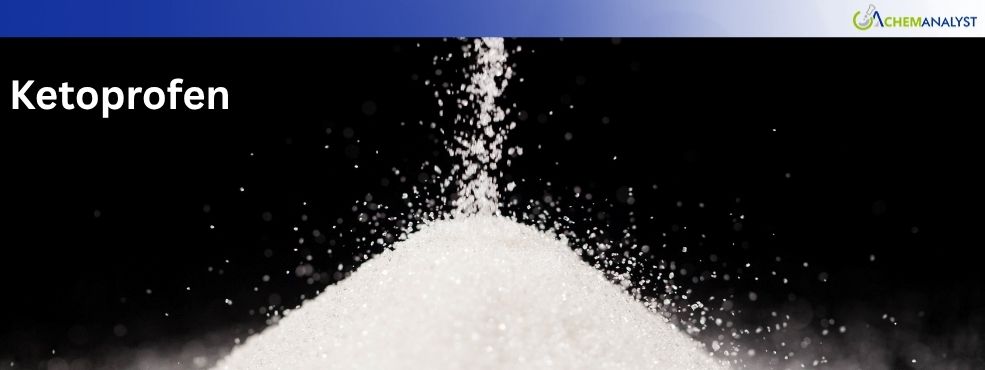Welcome To ChemAnalyst

The global pharma industry experienced a dramatic turn in May 2025 as Ketoprofen prices fell drastically across the big markets, signaling latent structural changes in the international drugs manufacturing economy. The abrupt price decline has induced waves in the downstream industries, forcing industry participants to re-strategize their purchases and market position.
Ketoprofen, the most common nonsteroidal anti-inflammatory drug (NSAID) utilized in medicine for pain and inflammation, is a major raw material applied in pharmaceutical formulations, cosmetics, and other industrial processes. The application of Ketoprofen extends beyond traditional medicine, applied in topical preparations, veterinary medication, and bespoke pharmaceutical manufacture. As such an important component of the global supply chain, price movements in Ketoprofen affect multiple industries directly, and current market trends are therefore interesting to observe.
The drama Ketoprofen price fall is the aftermath of multiple converging forces reshaping the pharma landscape. In India, the market saw steep falls reflecting overall structural headwinds confronting CRDMOs. Post-COVID normalization has caused sharp destocking of stocks, with manufacturers like Divi's Labs and Aarti Drugs experiencing tangible demand moderation for generic APIs like Ketoprofen.
Chinese manufacturers have captured similar market share simultaneously, based on cost advantages and eased regulatory controls inducted post-2021. This added competition has exerted downward pressure on export prices of Indian suppliers, practically resetting Ketoprofen price models. In addition, ongoing USFDA regulatory scrutiny has mounted compliance expenditures, impacting Indian pharma exporters' confidence as well as market responsiveness.
China's decrease in Ketoprofen prices reflects government pricing policy that emerged in 2024. The National Negotiation of Drug Prices applied significant cuts across drug products, averaging 63% reductions for negotiated drugs. Policy effects carried over into 2025, tightening the pricing controls on Ketoprofen and similar chemicals.
Market competition among Chinese drug producers has increased markedly, pushing producers to reduce the prices of Ketoprofen to avoid losing market share. The competitive environment, coupled with tariff rate fluctuations and trade policies, has contributed to an oversupply issue. China's decision to suspend deep tariffs on drug imports and raw materials at the beginning of 2025 reduced production costs, and manufacturers were able to translate savings into decreased prices of Ketoprofen.
The recent decline in the price of Ketoprofen during May has also had a corresponding follow-down impact on core industries such as cosmetics, pharmaceuticals, and biodiesel. To companies using Ketoprofen as raw material for input, the price decline poses both threat and opportunity. While the reduction in raw material price can boost profit margins in the short term, allowing the manufacturing company to be more cost-effective and competitive. On the other hand, the cyclical volatility of Ketoprofen prices has introduced uncertainty into procurement and budget planning processes in the long term. Firms are now compelled to rethink their procurement models and risk management frameworks in order to adapt to this volatile market condition.
We use cookies to deliver the best possible experience on our website. To learn more, visit our Privacy Policy. By continuing to use this site or by closing this box, you consent to our use of cookies. More info.
